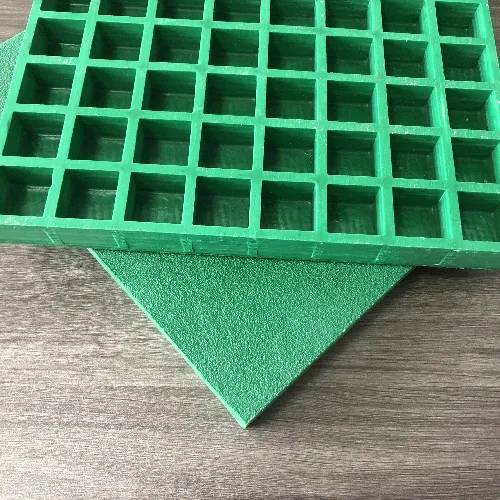loading...
- No. 9, Xingyuan South Street, Dongwaihuan Road, Zaoqiang County, Hengshui, Hebei, China
- admin@zjcomposites.com
- +86 15097380338
- Welcome to visit our website!
frp square tube
The Versatility of FRP Square Tubes Applications and Advantages
FRP (Fiber Reinforced Polymer) square tubes are emerging as a popular choice across various industries due to their unique combination of strength, lightweight properties, and resistance to environmental degradation. These materials have revolutionized the construction, automotive, aerospace, and marine sectors, delivering innovative solutions that meet modern-day engineering challenges. In this article, we will explore the structure, benefits, and applications of FRP square tubes.
Understanding FRP Square Tubes
FRP square tubes are composite materials formed by the combination of polymer resins and fibers (typically glass, carbon, or aramid). The square shape enhances structural integrity, allowing for efficient load distribution. This geometry not only provides aesthetic appeal but also contributes to easier assembly and compatibility with various design configurations.
One notable feature of FRP is its ability to be customized in terms of dimensions, thickness, and fiber type, making it suitable for a wide range of applications. The result is a product that is lightweight yet robust, providing a viable alternative to traditional materials like steel and aluminum.
Advantages of FRP Square Tubes
1. Corrosion Resistance Unlike metals that succumb to rust and corrosion over time, FRP square tubes can withstand moisture, chemicals, and harsh environmental conditions without deteriorating. This property significantly extends the lifespan of structures and reduces maintenance costs.
2. Lightweight Nature FRP materials are significantly lighter than traditional alternatives, making handling and installation more straightforward. This is particularly beneficial in sectors like construction and transportation, where weight plays a critical role in design and efficiency.
3. High Strength-to-Weight Ratio Despite being lightweight, FRP square tubes exhibit impressive tensile strength and impact resistance. This strength allows them to bear heavy loads while maintaining their structural integrity, a critical requirement in various applications.
4. Thermal and Electrical Insulation FRP square tubes offer excellent thermal insulation, which makes them suitable for applications that require thermal stability. Additionally, they are non-conductive, making them ideal for electrical applications where insulation is paramount.
frp square tube

5. Eco-Friendly The production and disposal of FRP materials have a lesser environmental impact compared to metals. Many FRP systems are designed for reusability and recyclability, aligning with sustainability goals in modern engineering.
Applications of FRP Square Tubes
1. Construction In the building sector, FRP square tubes are utilized for structural supports, columns, and beams. Their resistance to corrosion makes them ideal for marine environments, bridges, and buildings subjected to aggressive chemicals.
2. Transportation The automotive and aerospace industries leverage the lightweight and strength characteristics of FRP square tubes to enhance fuel efficiency without compromising safety and performance. Components such as chassis, frames, and body panels are increasingly made from FRP.
3. Marine Industry FRP square tubes are widely used in boat construction, docks, and other marine applications. Their resistance to saltwater and UV exposure ensures longevity despite the harsh conditions experienced in aquatic environments.
4. Industrial Applications Many industrial applications, such as storage tanks, scaffolding, and various structural components, benefit from the robustness and durability of FRP square tubes. They are particularly effective in environments where exposure to corrosive substances is prevalent.
5. Sports Equipment Lightweight yet strong, these tubes are also used in the production of sports equipment, including bicycle frames and various athletic gear, providing both performance and safety advantages.
Conclusion
The growing demand for efficient, durable, and sustainable materials is propelling the adoption of FRP square tubes in numerous industries. Their unique properties—corrosion resistance, lightweight, and high strength-to-weight ratio—position them as a formidable alternative to traditional materials. As technology continues to advance, we can anticipate even more innovative applications for FRP square tubes, solidifying their place in the future of engineering and design.
-
The Rise of FRP Profiles: Strong, Lightweight, and Built to LastNewsJul.14,2025
-
SMC Panel Tanks: A Modern Water Storage Solution for All EnvironmentsNewsJul.14,2025
-
GRP Grating: A Modern Solution for Safe and Durable Access SystemsNewsJul.14,2025
-
Galvanized Steel Water Tanks: Durable, Reliable, and Ready for UseNewsJul.14,2025
-
FRP Mini Mesh Grating: The Safer, Smarter Flooring SolutionNewsJul.14,2025
-
Exploring FRP Vessels: Durable Solutions for Modern Fluid HandlingNewsJul.14,2025
-
GRP Structures: The Future of Lightweight, High-Performance EngineeringNewsJun.20,2025
